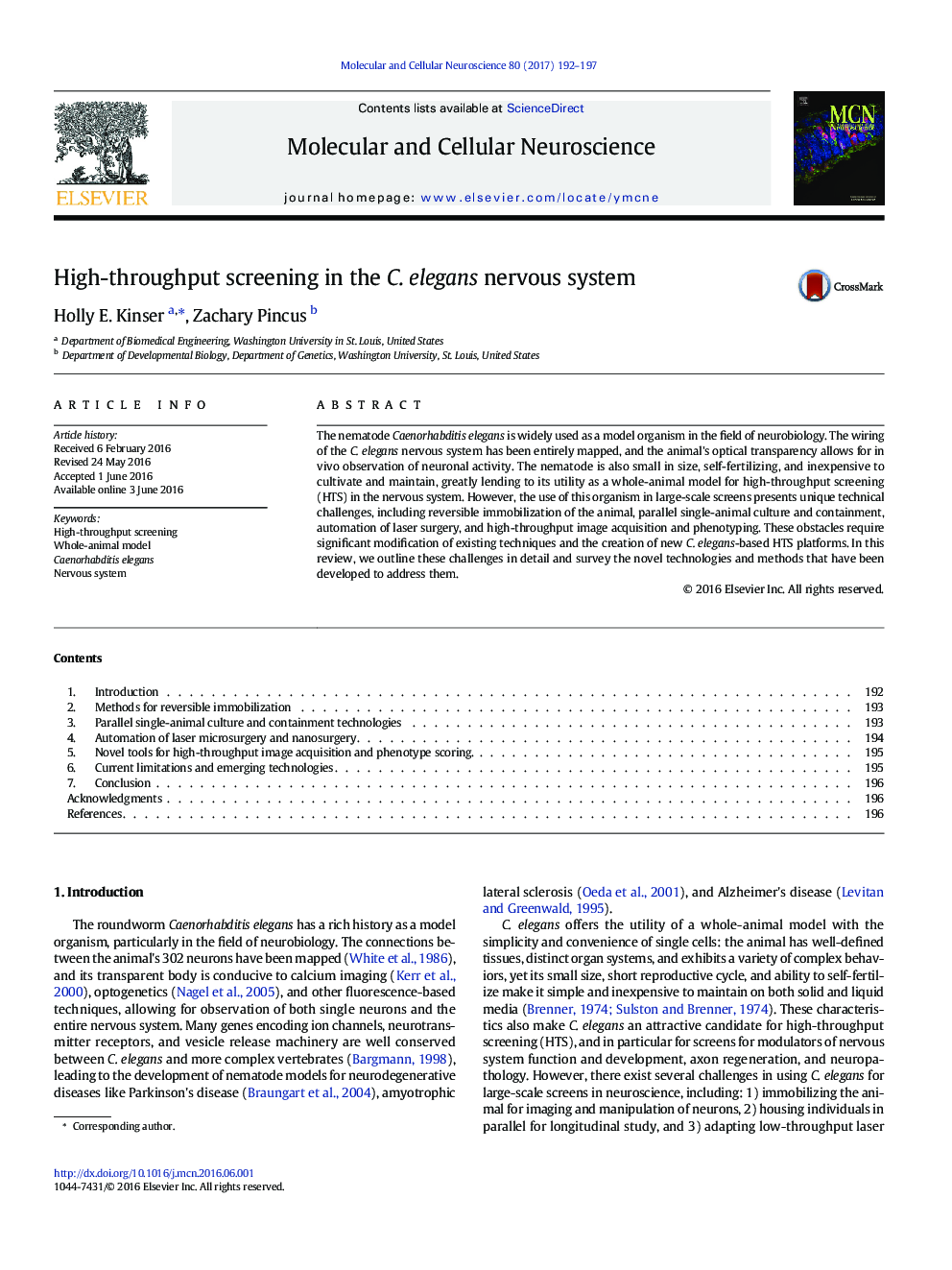| Article ID | Journal | Published Year | Pages | File Type |
|---|---|---|---|---|
| 5534393 | Molecular and Cellular Neuroscience | 2017 | 6 Pages |
•C. elegans is a model for high-throughput screening (HTS) in the nervous system.•Traditional techniques for manipulating C. elegans are laborious and lowthroughput.•High-throughput immobilization, parallel culture, and phenotyping are key challenges.•We review the technologies and platforms developed to address these challenges.
The nematode Caenorhabditis elegans is widely used as a model organism in the field of neurobiology. The wiring of the C. elegans nervous system has been entirely mapped, and the animal's optical transparency allows for in vivo observation of neuronal activity. The nematode is also small in size, self-fertilizing, and inexpensive to cultivate and maintain, greatly lending to its utility as a whole-animal model for high-throughput screening (HTS) in the nervous system. However, the use of this organism in large-scale screens presents unique technical challenges, including reversible immobilization of the animal, parallel single-animal culture and containment, automation of laser surgery, and high-throughput image acquisition and phenotyping. These obstacles require significant modification of existing techniques and the creation of new C. elegans-based HTS platforms. In this review, we outline these challenges in detail and survey the novel technologies and methods that have been developed to address them.
